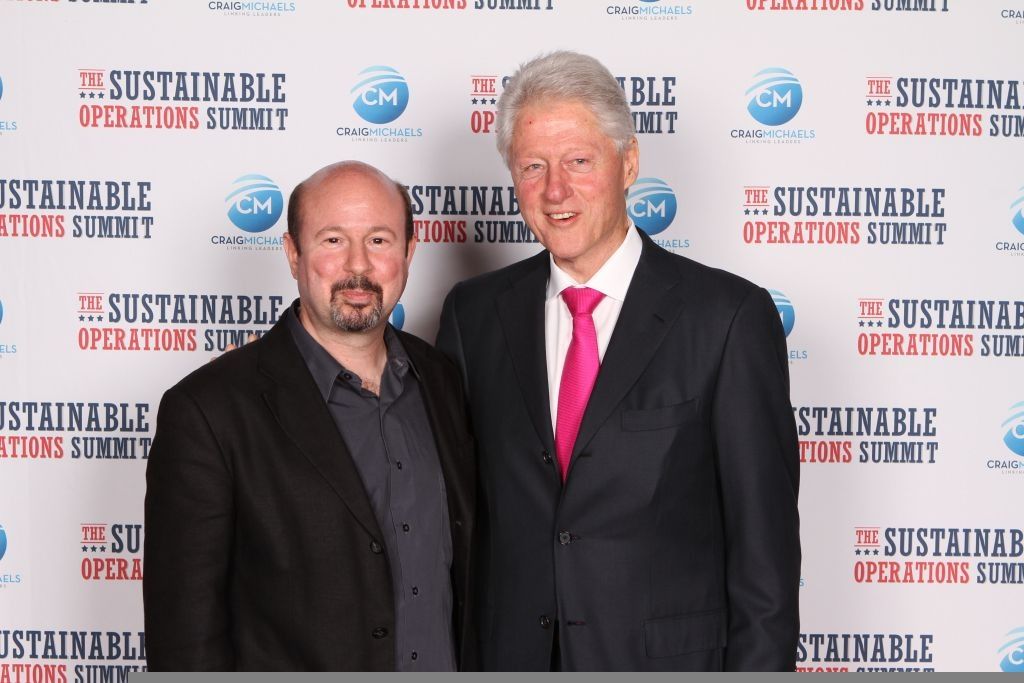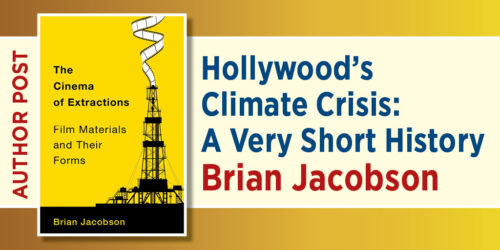Earth Day 2012: Part 2 of an Interview with Michael E. Mann
April 22 was Earth Day, and in honor of the occasion, we will be running a series of posts over the course of this week by authors of our environmental studies titles. These articles will cover a wide range of topics relevant to the study of the earth and the environment, from global climate change to the effects of economic development on the environment in China.
This is the second post of a two-part Q&A with climatologist Michael E. Mann, author of The Hockey Stick and the Climate Wars: Dispatches from the Front Lines. Mann is the scientist responsible for the famous “Hockey Stick Graph” that shows how recent global temperature rises have coincided with increased industrial development. You can read the first part of the interview here.
Q: Why is it important to prevent the politicization of science?
Michael E. Mann: History is replete with all too many examples of the dangers that arise when science becomes politicized, like Lysenkoism and its detrimental impact on Soviet agriculture during the Stalin regime. Science is almost unique among endeavors in terms of the self-correcting machinery that govern its progress. Those findings, theories, and predictions that have merit ultimately prevail because of their explanatory success, while those which do not fall to the wayside. But the success of the process relies on the open, objective, and unfettered give-and-take between scientists. When those with an agenda attempt to game the system, they threaten the integrity of the scientific process.
As I discuss in the book, the attacks against climate science might be even better described as the “scientization of politics” in the sense that the science of climate change, like other disciplines of science (e.g., human health/pharmaceuticals) whose findings prove threatening to some vested interests, is now being used by politicians as just another tool for waging politics, i.e., science itself has become a political football—a very dangerous and, in many ways, chilling development.
Q: Has your defense been similarly politicized? Are only Democrats defending you?
M.E.M: Not at all. Leaders from both political parties have come to my defense and expressed concern about the politicization of science. As I discuss in the book, prominent Republicans such as former chair of the House Science Committee Sherwood Boehlert (R-NY) and Senator John McCain (R-AZ), both came to our defense, in addition to prominent Democrats such as Henry Waxman (D-CA), when we came under attack by Joe Barton (R-TX) in 2005. Even though Barton was a powerful House Committee Chair, other prominent members of his own party were willing to call him out for what they saw as a politically inspired witch hunt against scientists.
It is unfortunate that climate change, and indeed other areas of science, has become hyper-politicized in recent years, and that denial of science has essentially become a litmus test now for one of the major parties. It was not that long ago when this was not the case. Climate change doesn’t care about your politics. The detrimental impacts will affect the children and grandchildren of Republicans and Democrats alike. It is good to see prominent Republicans like Sherwood Boehlert and Bob Inglis (R-SC) taking on leadership on this issue for their party–because ultimately their party does not want to be on the wrong side of history.
Q: Did Climategate discredit the hockey stick model of global warming? Is the hockey stick model dead . . . or alive and well?
M.E.M: Let’s remember that the so-called climategate was really a case of hacked and stolen emails–that seems to get lost. Ultimately “Hacked–gate” was yet another tactic in the long-term campaign to sow doubt among the public about the validity of climate change science. The largest science associations in the world issued a statement that reconfirmed the science, the emails not withstanding. There have now been more than a half dozen independent investigations in the U.K. and the U.S. that have all found that there was no evidence of impropriety. The emails were deliberately edited, words and phrases cherry-picked and taken out of context, and emails juxtaposed across a decade to suggest they were a single chain. All in the effort to undermine public confidence in the fact of climate change. Nonetheless, the smear campaign was timed for maximum effect, in the lead up to the 2009 Copenhagen Summit, and it probably set back efforts to deal with the climate change crisis several years, at great potential cost to us and our environment.
As for the Hockey Stick, it is alive and well! More than a decade later, there are now well over a dozen different reconstructions using different methods and different data which all come to the same conclusion: that the large-scale warming of recent decades is anomalous for at least the past millennium. Indeed, the most recent (2007) IPCC report extended the conclusions of our original work, finding that recent warming is likely anomalous for at least the past 1,300 years, now that reconstructions extend even further back in time.
Q: Critics say temperatures haven’t been rising as fast as the UNIPCC predicted. Doesn’t that discredit the hockey stick model?
M.E.M: The Hockey Stick really only characterizes temperature changes prior to the industrial period. The warming of the past century is actually documented by thermometer records around the globe, and even critics of climate change research like Berkeley astrophysicist Richard Muller now concede that the instrumental record of warming temperatures is robust. While claims are sometimes made by climate change critics that the models overestimate the warming, the actual scientific literature shows that the warming is occurring at the upper end of the changes that have been projected for decades by climate models. Certain phenomena, like declining sea ice in the Arctic, are proceeding at a far greater pace than the models projected. By many measures, the climate model projections have been overly conservative, rather than alarmist!
Q: How have climate models changed?
M.E.M: When I first got into climate science in the early 1990s, the models were quite crude by modern standards. They were very coarse in their spatial resolution, with (for example) New York City and Pittsburgh both falling within a single “grid box” of the model. The ocean’s currents were not especially well captured. Though these models were able to make successful predictions about future global temperature changes, they were not very credible when it came to making regional predictions about (for example) seasonal temperature and rainfall changes. This deficiency was related, among other things, to the fact that the models failed to reproduce certain key natural phenomena such as the El Niño/Southern Oscillation (ENSO). As the models were improved over time, and the ocean currents and wind patterns were better resolved, the models begin to produce El Niño events that looked a lot like the real world phenomenon. El Niño wasn’t “put into” the model—it arose as what we call an emergent phenomenon; once the physics of the models was sufficiently improved, El Niño events spontaneously began to occur, and increasingly they looked a lot like the real-world El Niño phenomenon. This is just one example of why we have increased confidence that the models are credible, and that their projections are to be taken seriously.





